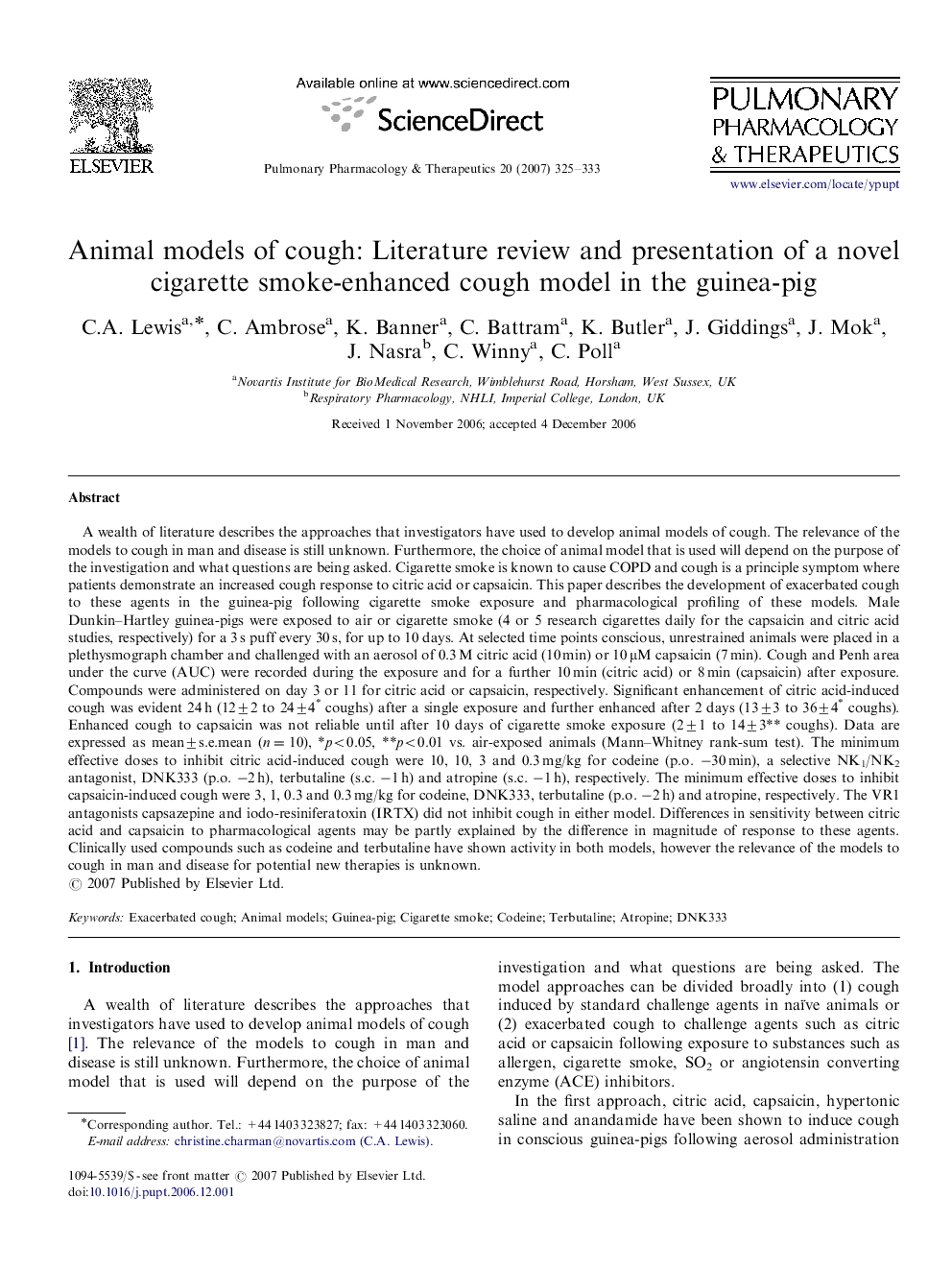| کد مقاله | کد نشریه | سال انتشار | مقاله انگلیسی | نسخه تمام متن |
|---|---|---|---|---|
| 2567900 | 1128357 | 2007 | 9 صفحه PDF | دانلود رایگان |

A wealth of literature describes the approaches that investigators have used to develop animal models of cough. The relevance of the models to cough in man and disease is still unknown. Furthermore, the choice of animal model that is used will depend on the purpose of the investigation and what questions are being asked. Cigarette smoke is known to cause COPD and cough is a principle symptom where patients demonstrate an increased cough response to citric acid or capsaicin. This paper describes the development of exacerbated cough to these agents in the guinea-pig following cigarette smoke exposure and pharmacological profiling of these models. Male Dunkin–Hartley guinea-pigs were exposed to air or cigarette smoke (4 or 5 research cigarettes daily for the capsaicin and citric acid studies, respectively) for a 3 s puff every 30 s, for up to 10 days. At selected time points conscious, unrestrained animals were placed in a plethysmograph chamber and challenged with an aerosol of 0.3 M citric acid (10 min) or 10 μM capsaicin (7 min). Cough and Penh area under the curve (AUC) were recorded during the exposure and for a further 10 min (citric acid) or 8 min (capsaicin) after exposure. Compounds were administered on day 3 or 11 for citric acid or capsaicin, respectively. Significant enhancement of citric acid-induced cough was evident 24 h (12±2 to 24±4* coughs) after a single exposure and further enhanced after 2 days (13±3 to 36±4* coughs). Enhanced cough to capsaicin was not reliable until after 10 days of cigarette smoke exposure (2±1 to 14±3** coughs). Data are expressed as mean±s.e.mean (n=10), *p<0.05, **p<0.01 vs. air-exposed animals (Mann–Whitney rank-sum test). The minimum effective doses to inhibit citric acid-induced cough were 10, 10, 3 and 0.3 mg/kg for codeine (p.o. −30 min), a selective NK1/NK2 antagonist, DNK333 (p.o. −2 h), terbutaline (s.c. −1 h) and atropine (s.c. −1 h), respectively. The minimum effective doses to inhibit capsaicin-induced cough were 3, 1, 0.3 and 0.3 mg/kg for codeine, DNK333, terbutaline (p.o. −2 h) and atropine, respectively. The VR1 antagonists capsazepine and iodo-resiniferatoxin (IRTX) did not inhibit cough in either model. Differences in sensitivity between citric acid and capsaicin to pharmacological agents may be partly explained by the difference in magnitude of response to these agents. Clinically used compounds such as codeine and terbutaline have shown activity in both models, however the relevance of the models to cough in man and disease for potential new therapies is unknown.
Journal: Pulmonary Pharmacology & Therapeutics - Volume 20, Issue 4, August 2007, Pages 325–333